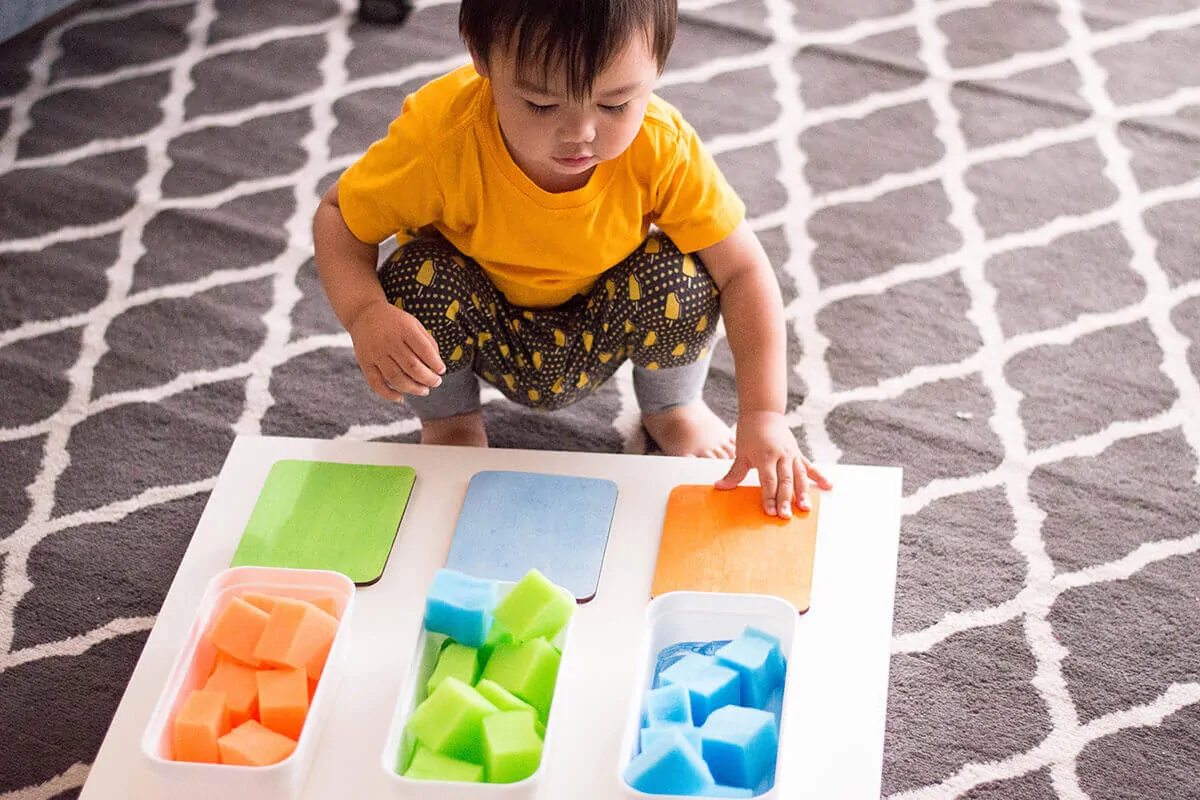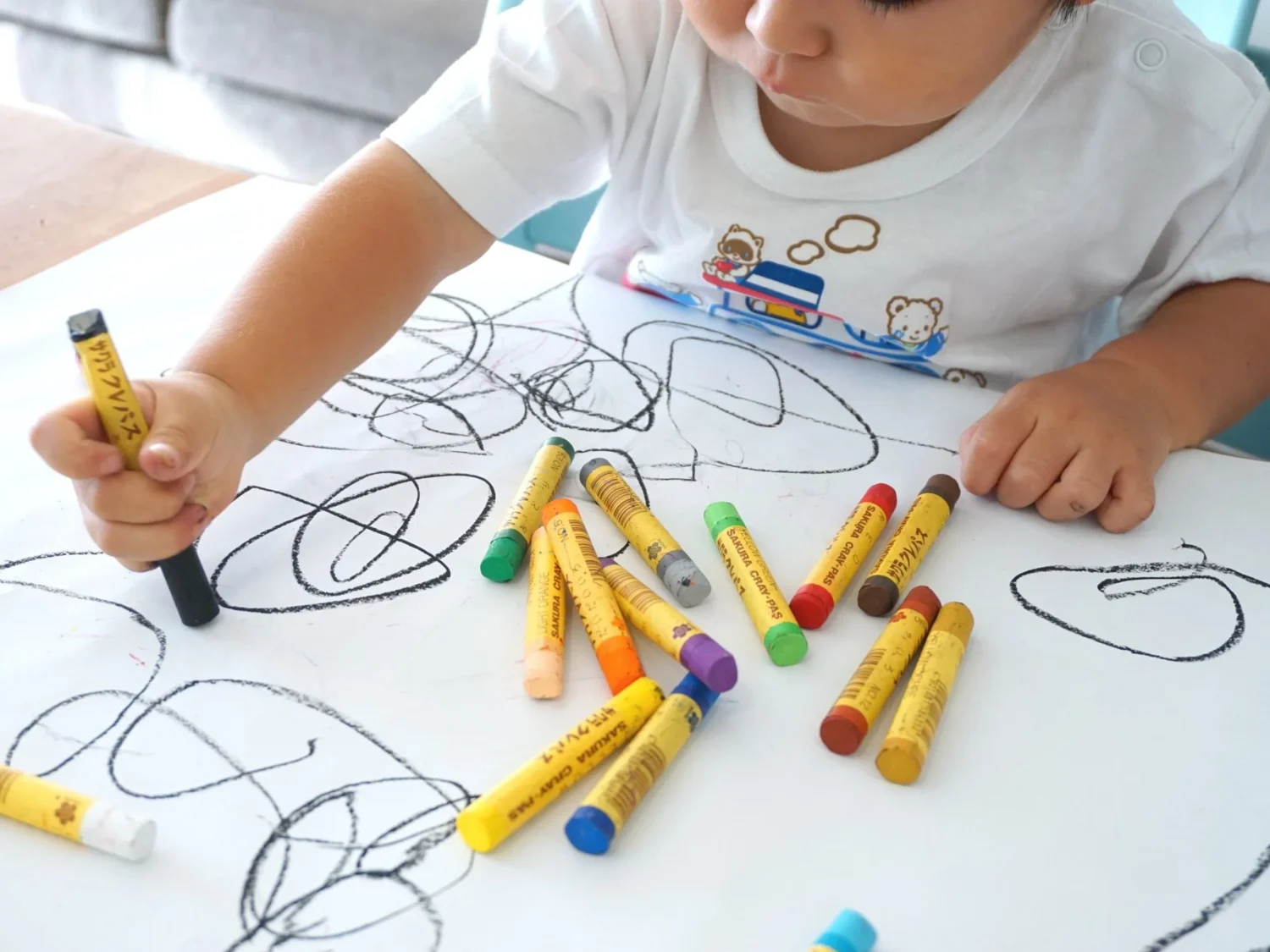Color perception plays a crucial role in a child’s development, influencing cognitive, emotional, and social growth. Understanding colors not only enriches a child’s way of seeing the world but also lays the foundation for learning and communication.
This blog post aims to shed light on when and how toddlers begin their journey into the colorful realm of their surroundings, offering parents and caregivers valuable insights to support this vibrant aspect of early childhood development.
The Development of Color Perception
Color perception in infants and toddlers is a fascinating developmental process that evolves as their visual system matures. Initially, newborns perceive colors in a limited capacity, primarily distinguishing high-contrast shades such as black, white, and red.
As they grow, their ability to see and differentiate among a wider range of colors improves significantly, typically around 4 to 6 months of age. This development is closely tied to the maturation of the cones in the retina, which are responsible for color vision. Sensory experiences play a vital role in this stage, as exposure to various colors enhances a toddler’s ability to recognize and differentiate them.
Early Signs of Color Recognition

The first signs of color recognition in toddlers can be both subtle and profound. Parents might notice their child’s fascination with colorful objects, a preference for certain colors, or the ability to group toys by color.
These early interactions with color are crucial, as they indicate a developing awareness and understanding of the diverse hues that make up their environment. Such milestones are often accompanied by joy and excitement, both for the child experiencing the world in new shades and for the parents witnessing these developmental leaps.
Factors Influencing Color Learning
A myriad of factors can influence a toddler’s ability to learn colors, including genetics, environmental exposure, and parental involvement. Genetic predispositions can affect color perception, making it easier or more challenging for some children to differentiate colors. The environment, rich with a variety of colors and opportunities for engagement, serves as an extensive palette for exploration and learning. Moreover, how parents and caregivers introduce and talk about colors can significantly impact a child’s interest and ability to learn colors effectively.
Integrating STEM for Kids activities that incorporate color learning can further enhance this process, offering hands-on experiences that blend science, technology, engineering, and math with artistic exploration. This approach not only broadens the scope of learning but also encourages creativity and critical thinking, making the journey of color discovery both educational and fun.
Color Learning Milestones
Typically, toddlers begin to differentiate between colors around 18 to 24 months of age, with the ability to name different colors emerging by approximately 3 years. However, these milestones can vary widely among children.
Recognizing and naming colors are significant achievements in a child’s development, indicative of advancing cognitive skills and the ability to make distinctions in the world around them. It’s important to approach these milestones with patience, understanding that each child develops at their own pace.
Methods for Teaching Colors

Teaching colors to toddlers can be both fun and educational, incorporating a variety of strategies and activities. Simple games like sorting colored blocks, reading brightly illustrated books, or engaging in everyday activities such as naming the colors of fruits while grocery shopping can be effective.
Activities that blend learning with play are especially beneficial, as they encourage curiosity and enjoyment in the learning process. Creativity in selecting activities can make color learning an integral and enjoyable part of a toddler’s daily life.
Cultural and Linguistic Influences
Cultural and linguistic contexts play a significant role in how children perceive and learn about colors. Research has shown that the language used to describe colors can influence a child’s ability to distinguish and remember them.
Furthermore, some cultures may emphasize certain colors more than others or have unique color names, affecting color perception and categorization. Understanding these differences is crucial for appreciating the diverse ways in which children around the world come to understand and describe their colorful experiences.
Challenges in Color Learning
Parents may encounter various challenges when teaching colors to their toddlers, such as a lack of interest or difficulty in distinguishing colors. It’s important to recognize that these challenges are often part of the learning process.
Strategies to overcome these hurdles include using interactive and sensory-rich activities, ensuring a variety of colorful experiences, and maintaining a positive and encouraging learning environment. Patience and creativity in approach can significantly aid in overcoming these challenges.
The Role of Technology
Technology, including educational apps and digital media, offers additional avenues for teaching colors to toddlers. These tools can provide interactive and engaging ways to learn about colors, featuring animations, games, and stories.
However, it’s vital to balance tech-based learning with real-world experiences, as tactile and physical interactions with colorful objects play an indispensable role in reinforcing color knowledge and perception.
Red Flags ─ Signs of Color Vision Deficiency

Parents need to be aware of signs that may indicate a color vision deficiency, such as difficulty distinguishing between colors or a lack of interest in colorful toys. If concerns arise, seeking a professional evaluation can provide clarity and guidance. Early detection and support can help address any challenges and ensure that children receive appropriate resources and accommodations.
Celebrating Progress
Celebrating a child’s progress in color learning is crucial for fostering a sense of achievement and encouraging further exploration. Acknowledging milestones, whether big or small, reinforces the joy of learning and helps build confidence.
Simple gestures like praise, displaying their colorful creations, or sharing their achievements with loved ones can make a significant impact on their continued interest and engagement in learning colors.
Conclusion
The journey of learning colors is a vibrant and essential aspect of early childhood development, offering a window into how toddlers perceive and make sense of the world. This blog post has explored the developmental milestones, teaching methods, and influences that shape a child’s color perception.
By understanding these elements and embracing patience and creativity in our approach, we can support toddlers as they discover the rich tapestry of colors that surround them. Let’s celebrate each step of this colorful journey, fostering a lifelong appreciation for the beauty and diversity of our world.
 Hi Boox Popular Magazine 2024
Hi Boox Popular Magazine 2024



